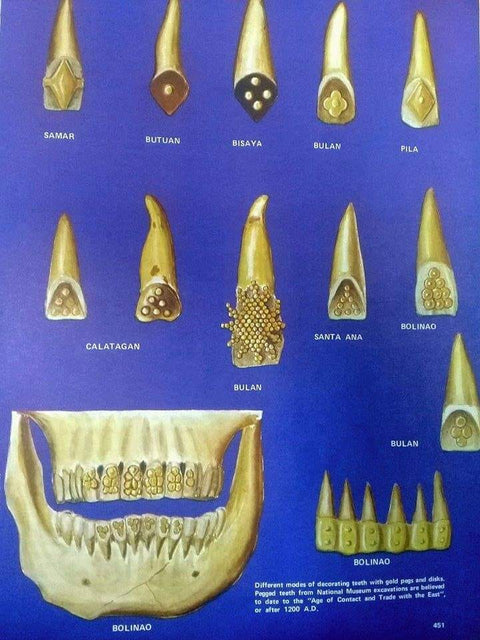
History on Philippine Jewelry: Dental Artistry in pre-Spanish Philippines

The world of dental artistry in the pre-Spanish Philippines goes so deep! Before the Spanish era, teeth decoration was common, symbolizing status among indigenous communities in the Philippines. Pre-Christianity, gold-filled teeth were a symbol of prestige. The teeth enamel was decorated with intricate gold ornamentation resembling natural shapes like fish scales, reflecting the wearer's status, strength, and bravery. Antonio Pigafetta, chronicler of the Magellan expedition in 1521, vividly described one chieftain with 'three spots of gold on every tooth,' highlighting the prominence of gold dental adornments among indigenous leaders.

Unearthed in Bolinao, the Bolinao Skull, part of a collection by the National Museum of the Philippines, offers insights into early Philippine lives during the 14th-15th centuries. Displayed at the Pang-ulo Exhibit, 4th floor, National Museum of Anthropology, Manila, the Bolinao Skull stands as a reminder of Luzon's forgotten history, echoing the cultural practices and beliefs of its native peoples during the Middle Ages.

🔍 Disclaimer: This post is crafted based on information from https://www.ancient-origins.net/artifacts-other-artifacts/bolinao-skull-0018728 for reference. For a more detailed exploration of the Bolinao Skull, check out the source.
